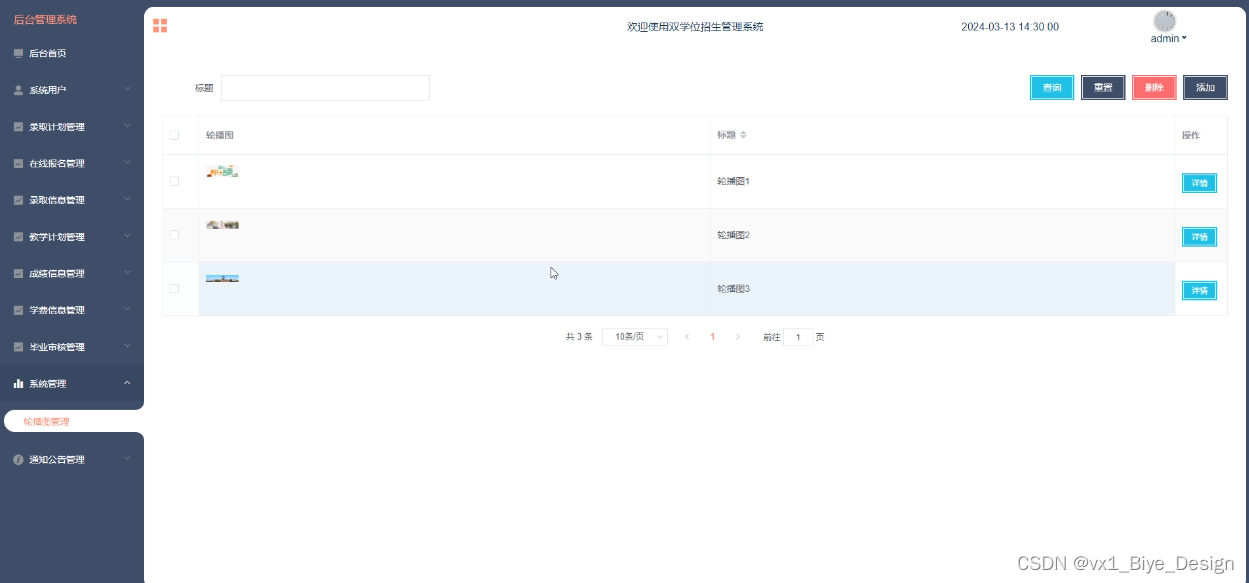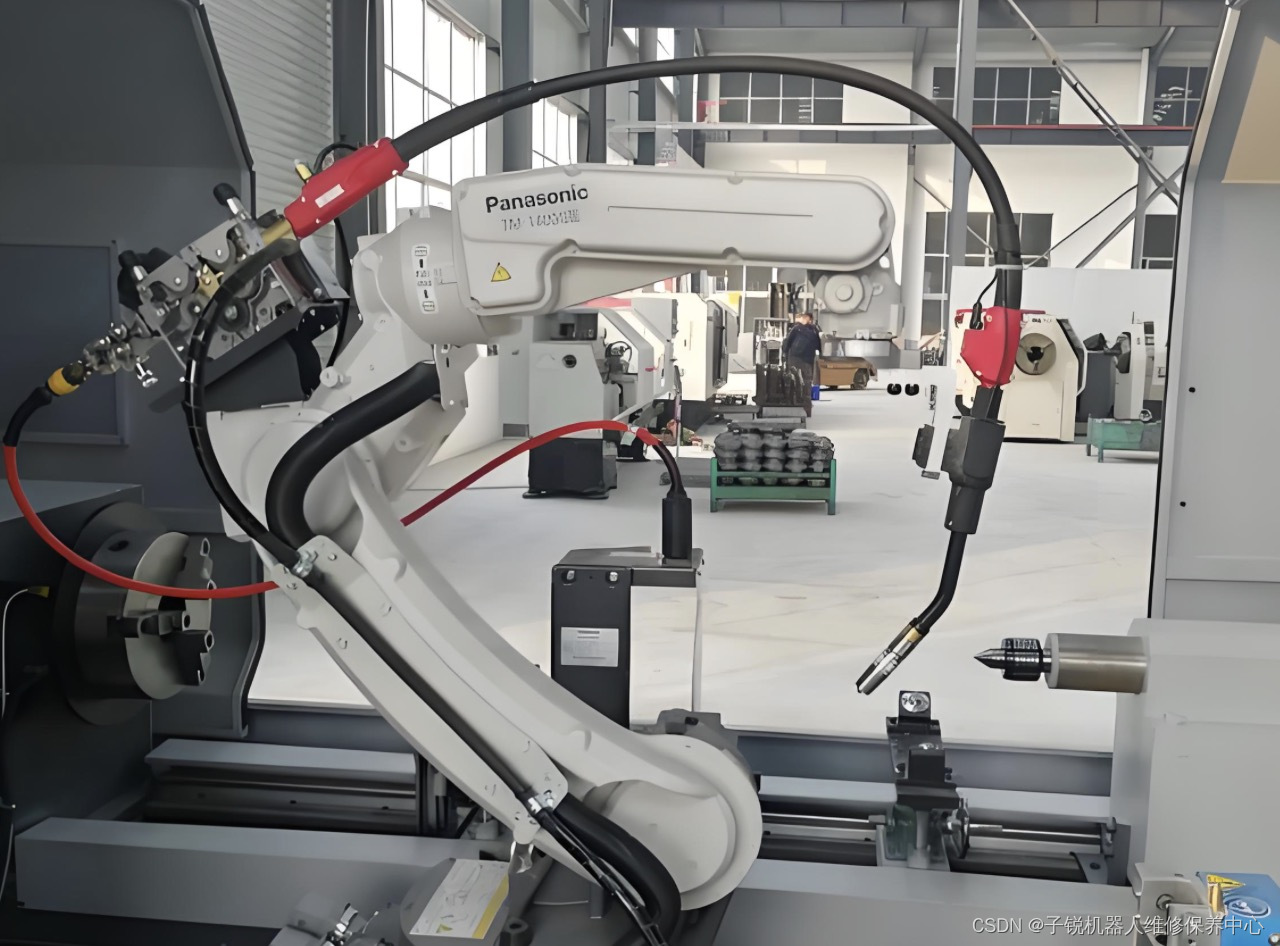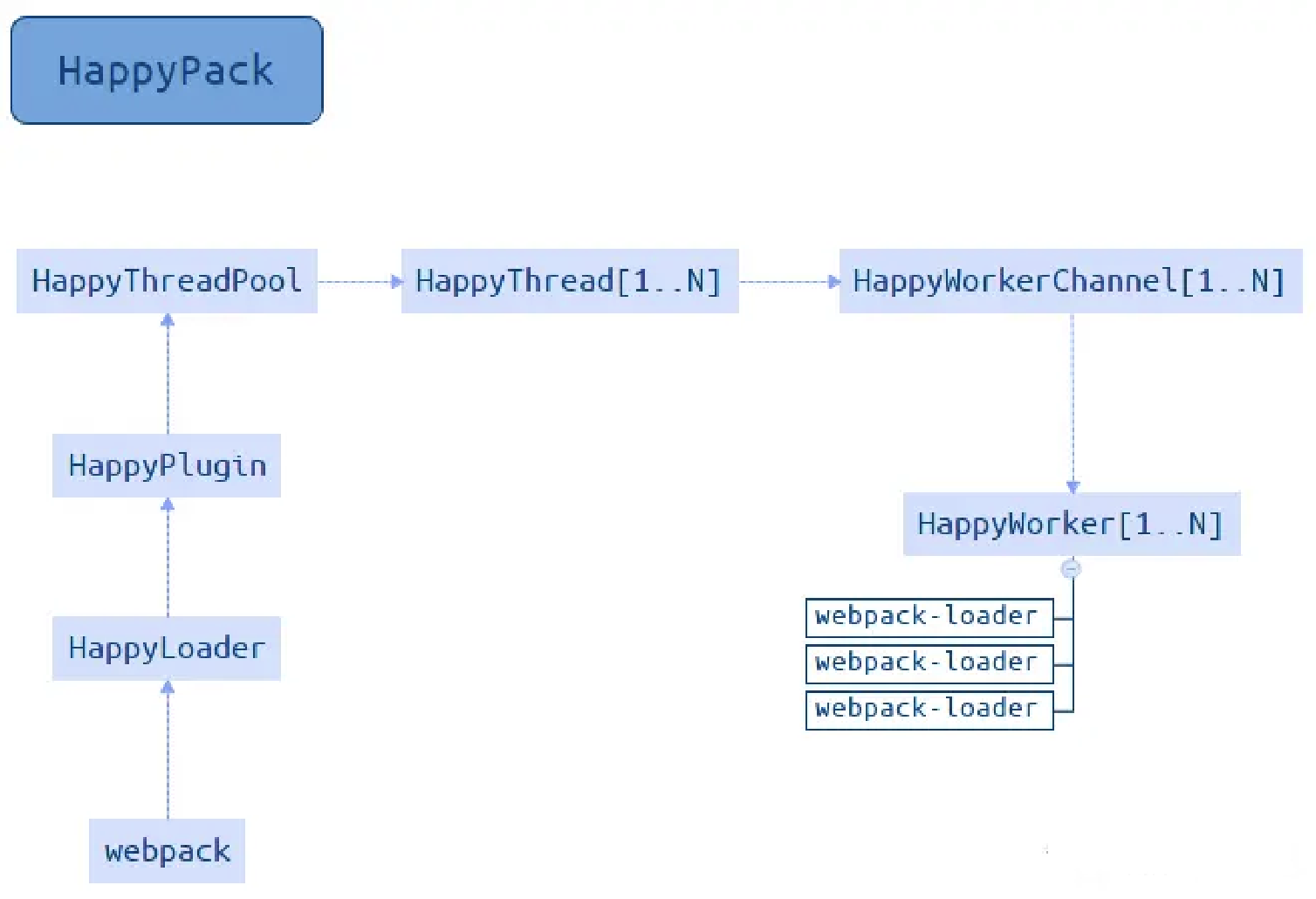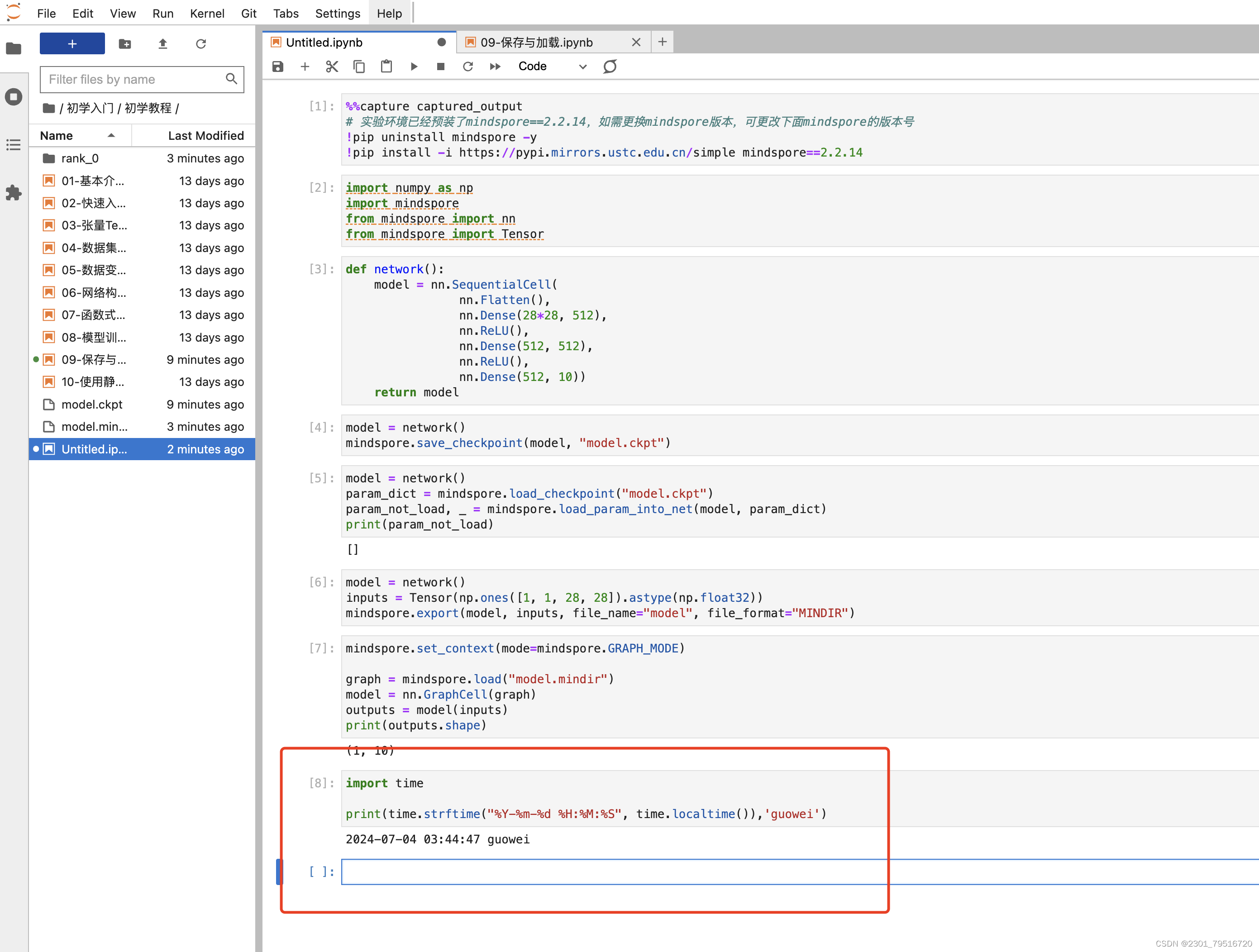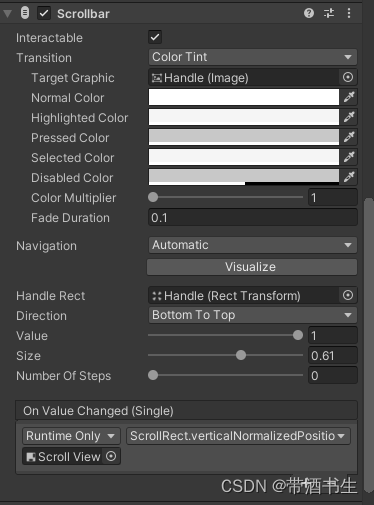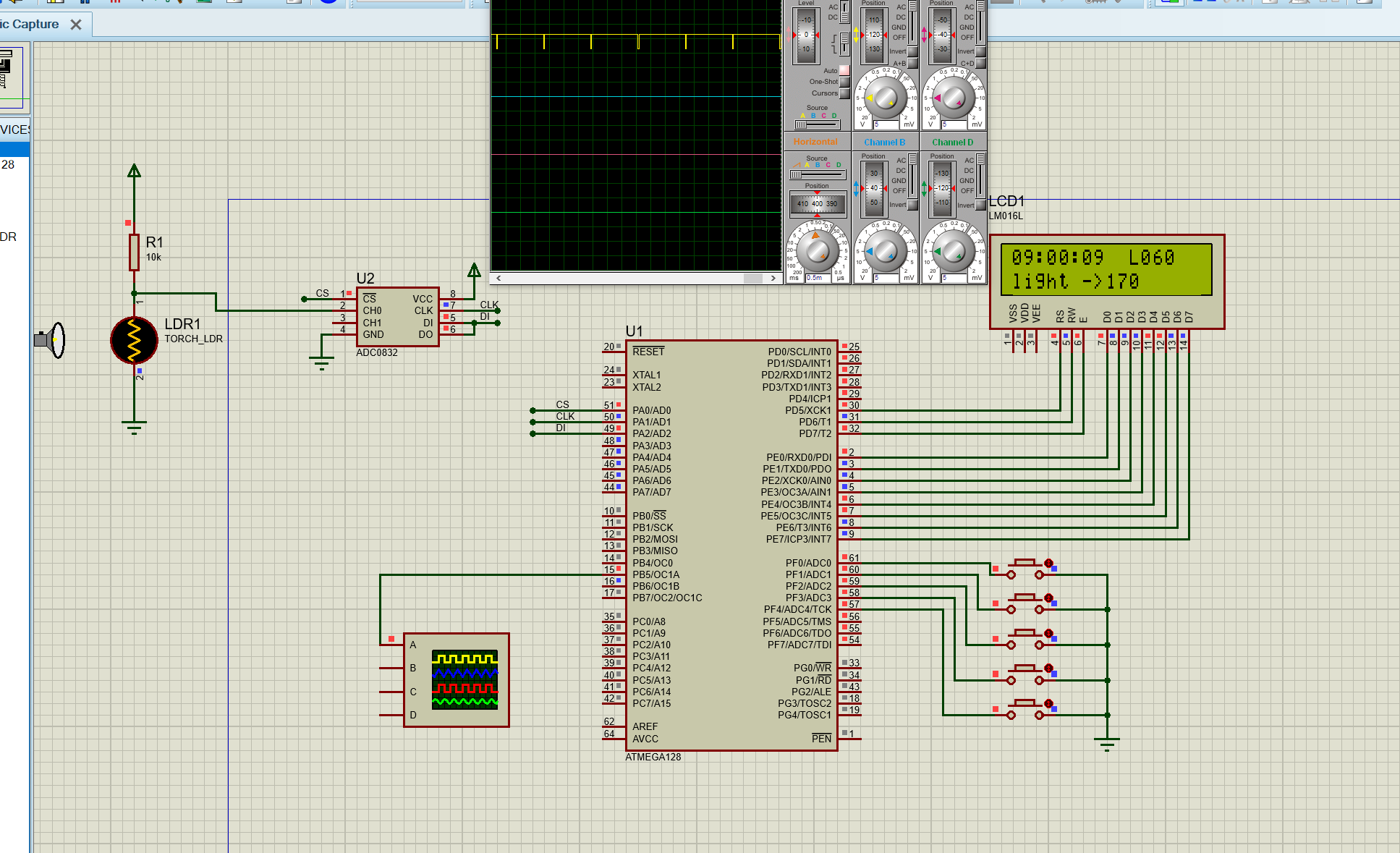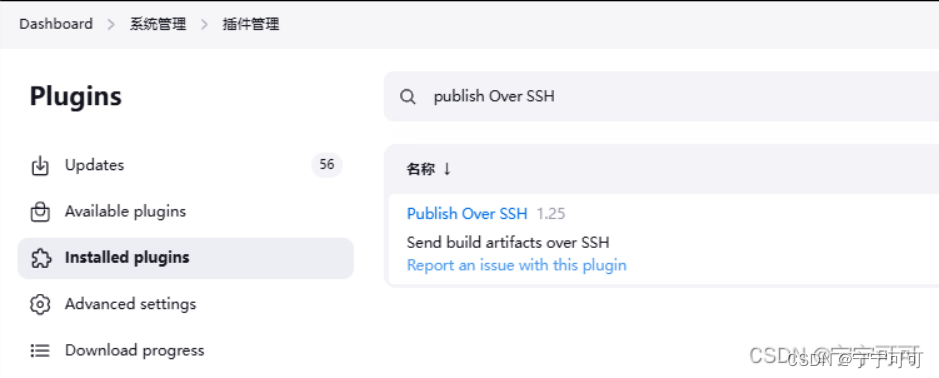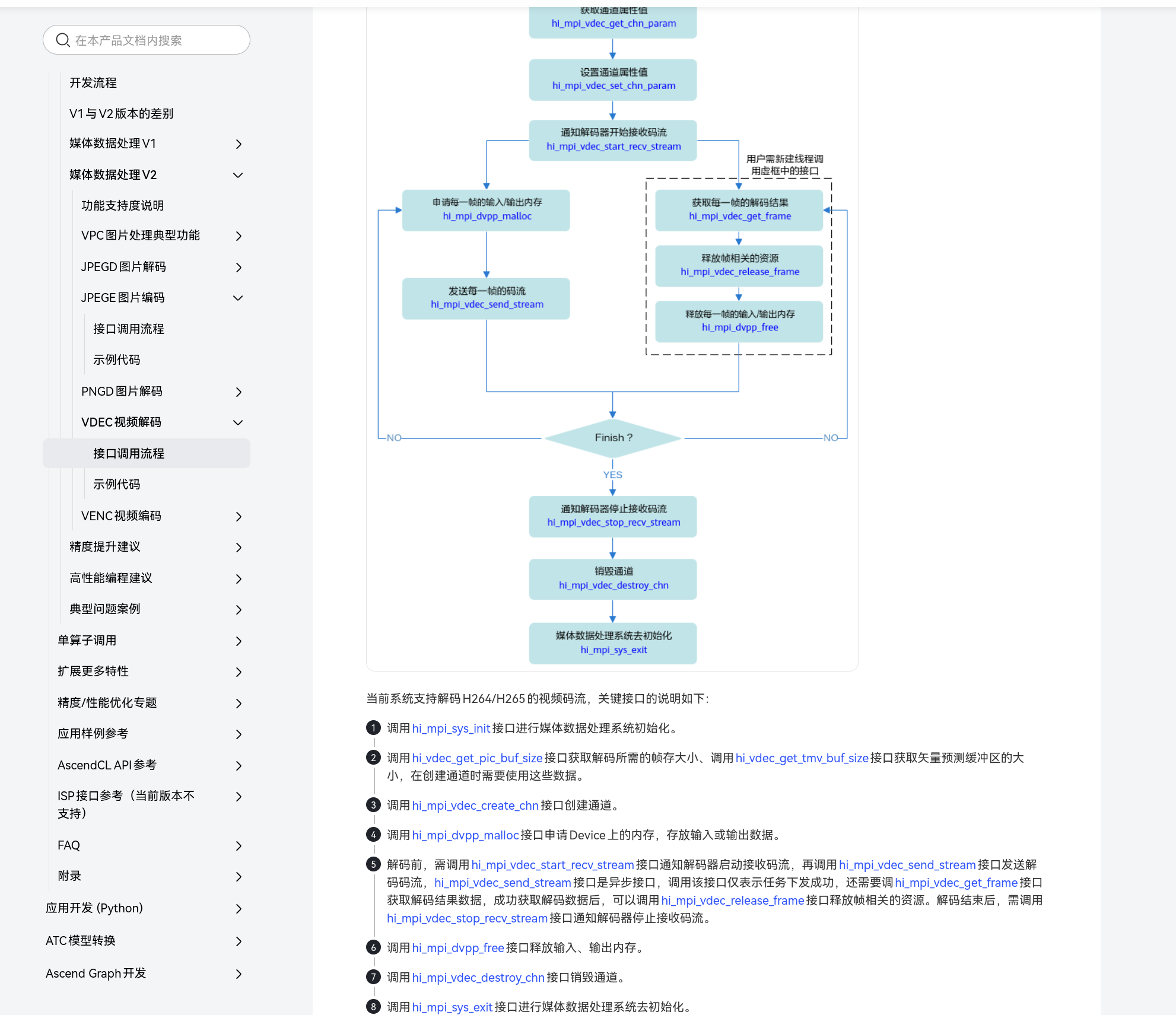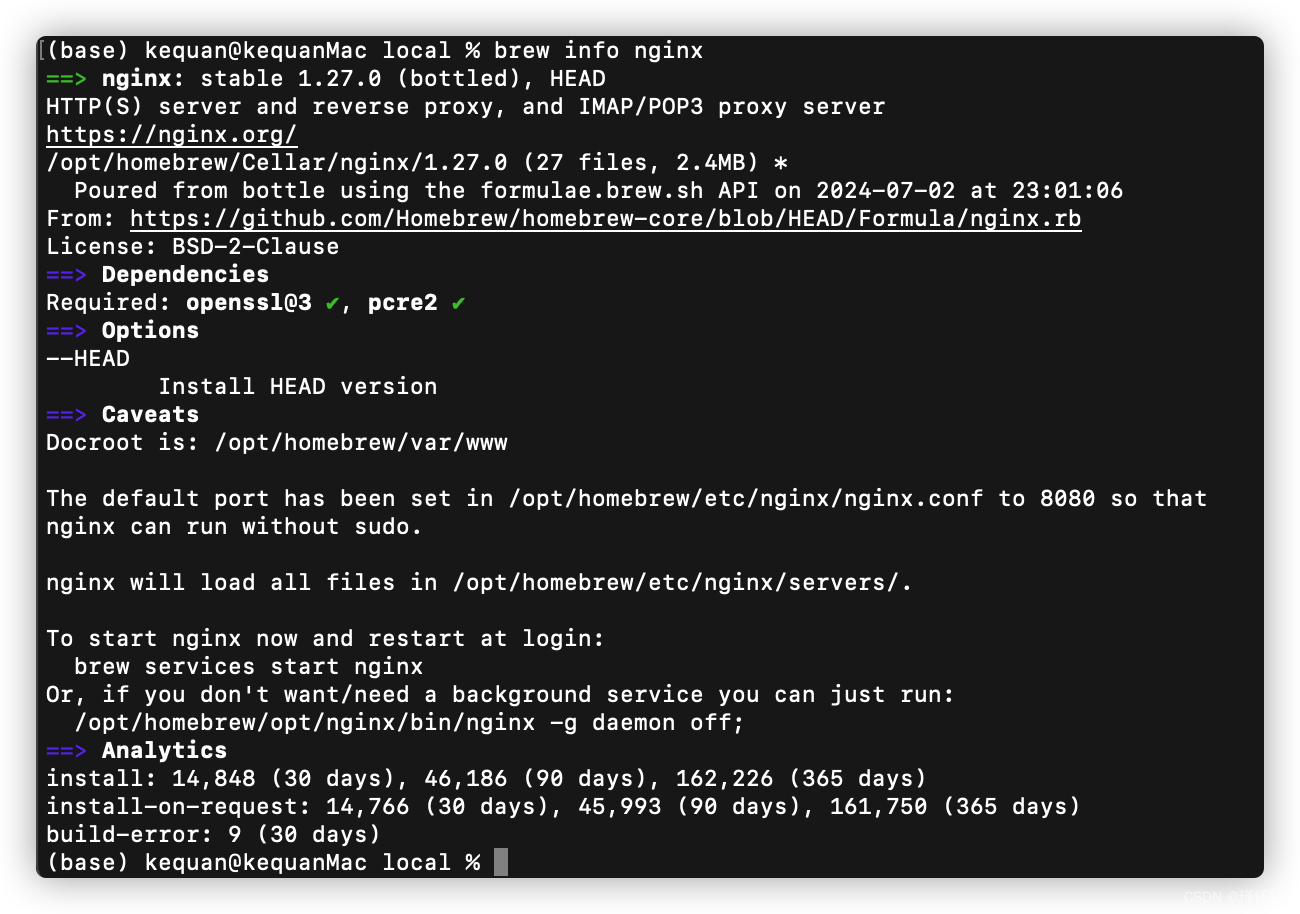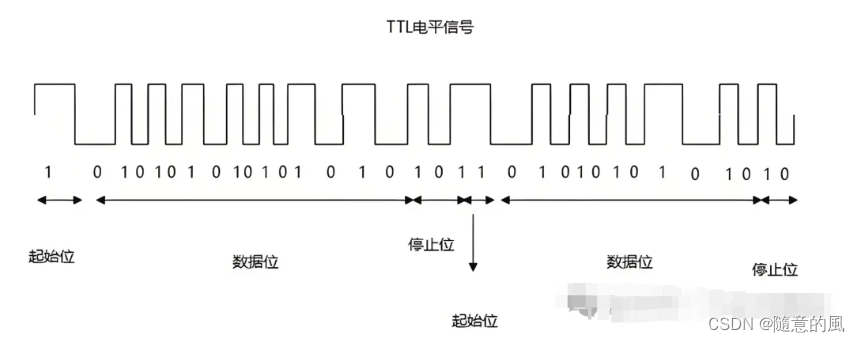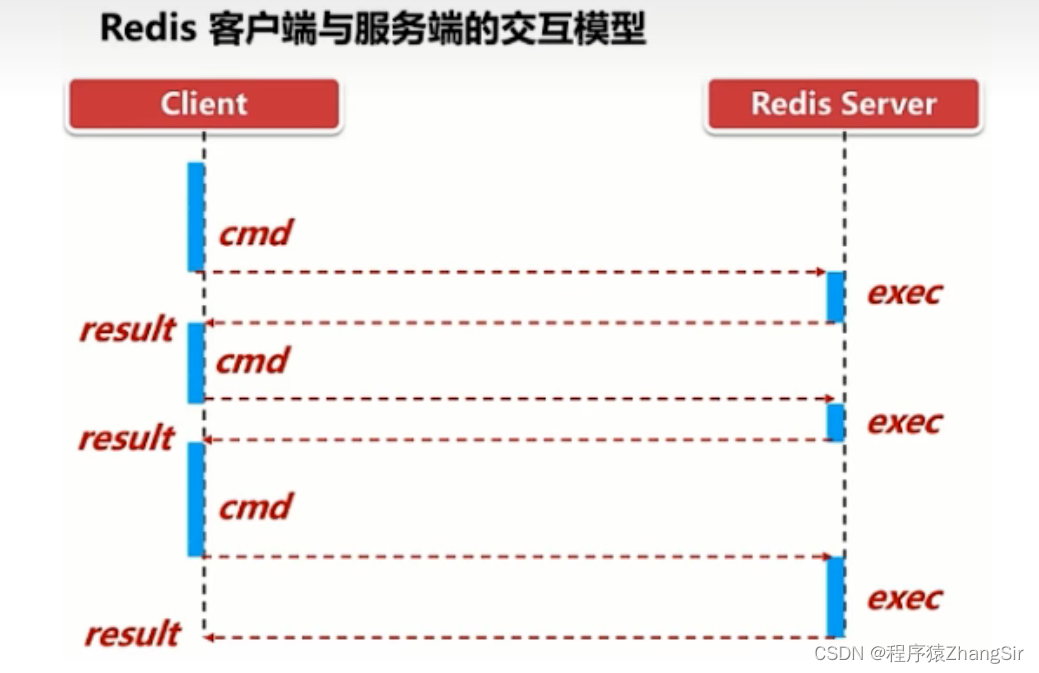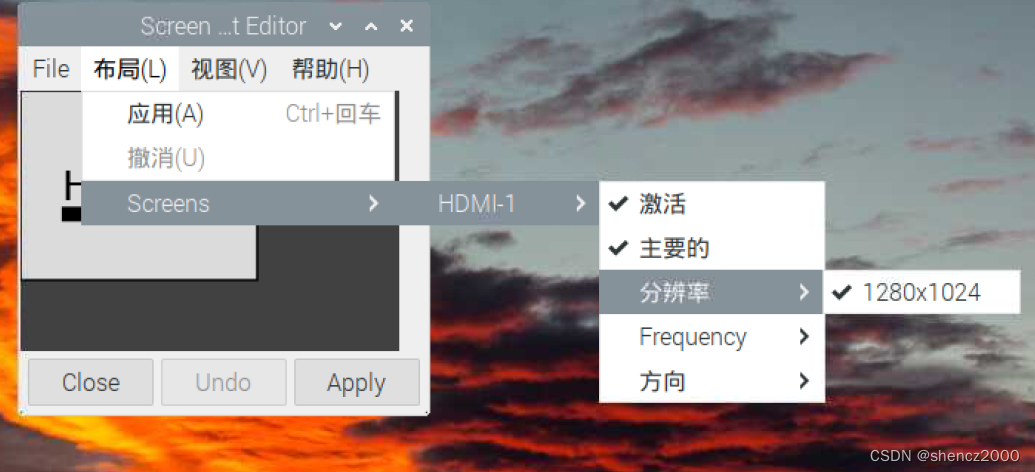1 while
while 主要用的场景没有 for 循环多。 while循环:主要运行场景 我不知道什么时候结束。。。不知道运行多少次
1.1 基本用法
# while 4 > 3: #一直执行
# print("hell0")
while 4 < 3: #不会打印,什么都没有
print("hell0")while 循环的执行流程
#while 循环的执行流程
#当把while 循环下面的子分支执行完毕之后,
#程序会返回while 条件判断语句。直至条件不满足
#while趋势时一个加强版的if, if判断一次,while会回头再判断条件是否满足
#可以用debug执行
while 4 > 3:
print("hell0")
print("bye")
print("no")
条件赋值
#条件赋值,满足什么条件后跳出循环
#while循环把for循环的机制手动化
cases = [
{"url" : "http://", "method": "get"},
{"url" : "http://examle", "method": "post"}
]
index = 0
while index < len(cases):
print(cases[index])
#自动索引 + 1
#需要缩进,不然不在循环中,会导致死循环
index += 1
--------结果---------
{'url': 'http://', 'method': 'get'}
{'url': 'http://examle', 'method': 'post'}1.2 break
一般条件控制好,是不需要使用break的,但存在不好控制的条件。
cases = [
{"url" : "http://", "method": "get"},
{"url" : "http://examle", "method": "post"}
]
index = 0
while True:
print(cases[index])
if index == 1:
#手工终止,强制终止while循环或者for
print("索引为{},终止while循环".format(index))
break
index += 1
-------------结果-------
{'url': 'http://', 'method': 'get'}
{'url': 'http://examle', 'method': 'post'}
索引为1,终止while循环1.3 pass
通常用在,子语句不做任何操作,用pass放在这作为一个占位符 ,表示什么都不干
pass语法
while True:
#无限跑abc
pass
print("abc")
if 1:
#当有冒号有子语句的时候,目前还不知道这个语句怎么写,先用pass占一个位置
pass
print("hell0")
elif 2:
print("bey")1.4 continue
终止本次子语句
#continue 是表示跳过此次子与,进入下一个循环判断
while True:
continue
print("abc")1.5 while循环的嵌套
while True:
print("第一层")
while True:
print("the 第二层")while 小结
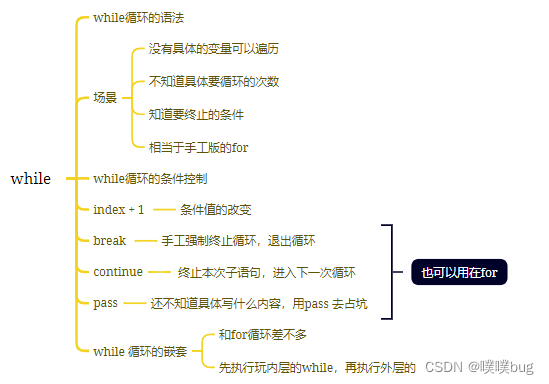
while和for区别



